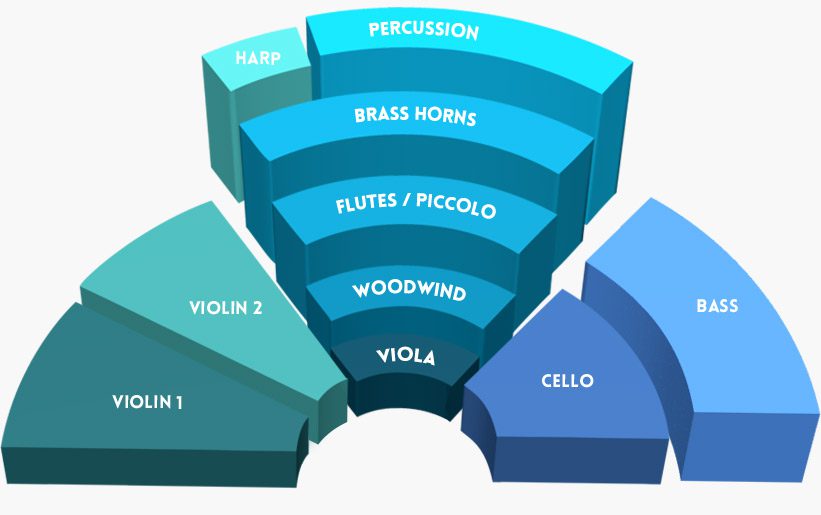Context
Conga de fuego by Arturo Marquez
Arturo Marquez was born in 1950 in Sonora, Mexico, and began composing at the age of 16. He is one of the country’s best known contemporary composers. Marquez’ father was a mariachi musician and his grandfather a Mexican folk musician, and so he grew up listening to different styles of music which he would later incorporate into his compositions.
Starter Task
What adjectives come to mind when you start listening to this piece? Make a list of 5 words to describe the mood of this music. When you’ve made your list, click on the box below and see how it compares to our list.
Listen For
Now as you listen, think about how the composer has created this mood through his music.
Try jotting down the headings below and writing a couple of bullet points under each one. When you’ve finished listening, or if you get stuck you can click on the box below to find some suggested answers.
Instruments
Take a look at the picture of how an orchestra is laid out. It might help jog your memory when you’re thinking about the instruments.

As you’re listening can you identify the different families of orchestral instruments?
Are there any solo instruments you can spot?
Rhythm
Can you remember any key words which could help you describe the rhythm?
How does the composer maintain the relentless rhythmic drive?
Texture
How does the composer vary the texture?
Are there any moments where the orchestral texture thins out?
Dynamics
When discussing dynamics (volume) it’s a good idea to focus on 3 main points in the music:
- Start
- Middle
- End
Once you’ve done this, then focus on other more subtle dynamic points, for example, if there are sudden changes or more gradual dynamic changes.
Melody
Is it easy to pick out the melody?
Is it stepwise or does it contain big leaps?
Is there any repetition?
Any other features
Write down anything else that comes to mind whilst you’re listening.
Things To Consider
If you liked the Conga del Fuego, why not listen to Marquez’ Danzon no.2 for more toe-tapping fiery rhythms!
Can you use the rhythmic ideas found in this piece to create your own exciting fiesta composition?